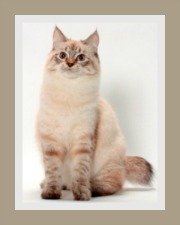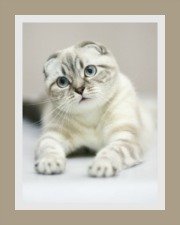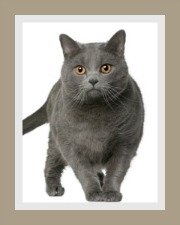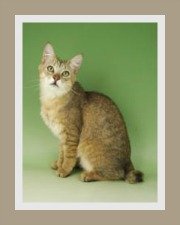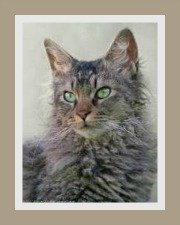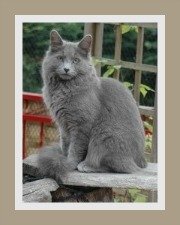Hairless Cats
Select Your Nude from these 8 Beauties
background
Hairless cats have appeared throughout history.
The first documented case of these cats was the Mexican Hairless found in New Mexico in 1903.
There are a number of cat breeds that are characterized by a complete absence of hair OR a fine downy coat that is often compared to suede.
hairless cats
The Mexican Hairless is thought to date back to Pre-Colombian times (prior to 1500's) and even back to the Aztecs. Sadly, the Mexican Hairless is believed to be extinct.
sphynx
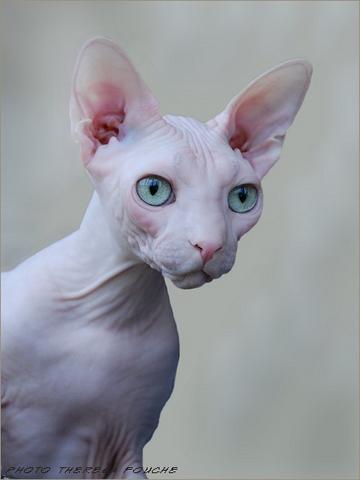
Sphynx Cats are known by many other names - the Canadian Sphynx, Sphinx, Moon Cat and Moonstone Cat.
This hairless kitty was discovered in Canada around 1966 and is possibly the most popular of the nude breeds.
donskoy
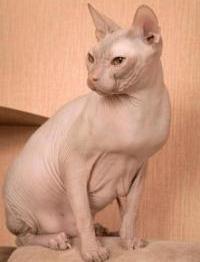
The
Donskoy, like the Sphynx is known by various other names - the Russian
Hairless, Don Sphynx, Don Hairless and the Donsky. This cat is often
confused with the Sphynx, but the gene that causes the hairlessness in
these cats is different.
peterbald
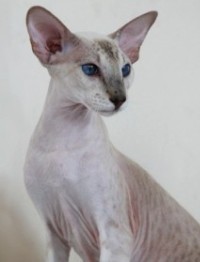
The Peterbald
is not a natural breed, but rather a 'Russian creation' - this cat was
developed by crossing a handsome male Russian Hairless (Donskoy) with
an Oriental Shorthair female. The Peterbald joined the 'cat walk' in
1994.
ukrainian levkoy
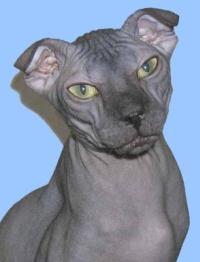
The Levkoy cat hails from the Ukraine.
This hairless cat was created in
2000 by crossing a cat with folded ears (probably a Scottish Fold) with a
Sphynx cat. The result of this union was a nude cat with lop-ears.
bambino
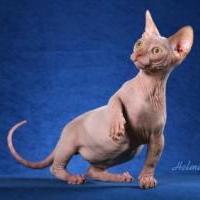
© Photo Courtesy of Helmi Flick
The Bambino cat belongs to the group of dwarf cats developed in 2005 crossing the short-legged Munchkin cat with the Sphynx. The result of this cross is an adorable cat, abscent of hair with short legs.
dwelf
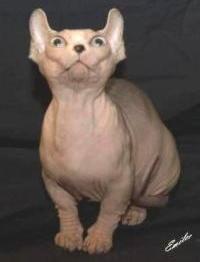
The Dwelf cat is a miniature or dwarf cat created by crossing the short-legged Munchkin cat with the unique curly eared American Curl and the hairless Sphynx. -
kohana
The Hawaiian Hairless, aka the Kohana Kat was discovered in Hawaii in 2002.
These very rare hairless felines do not have downy fur like the other cats mentioned here - they are totally bald and are absent of hair follicles.
minskin
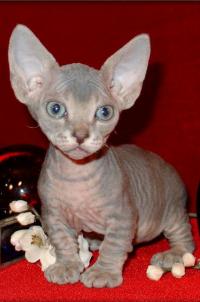
© Photo Courtesy of Paul Mc Sorley
The Minskin cat was developed by Paul McSorley in 1998. His aim was to create a short-legged cat with fur restricted points (or extremities), much like the color points of Siamese cats.
why cats are hairless
This lack of hair can be caused a spontaneous mutation, caused by the recessive 'allele hr' gene OR by a natural and spontaneous mutation caused by a dominant hair loss gene.
Recessive means it can skip many generations before it once again comes to light. It is believed that these natural mutations occur in the cat population every 15 to 20 years.
Hairlessness has been recorded amongst many of the established cat breeds and is not unique to the recognized 'nude' breeds.
The level of hairlessness differs between the different cat breeds.
Some are entirely bald (even absent of hair follicles) whilst others have a fine down covering their bodies.
Their skins or coats can be described as having the same texture as a warm, soft and fuzzy peach.
hairless cats | care | ideal home
These are very special breeds. It should be noted however, that it's a myth that these cats are hypo-allergenic and that they are low maintenance cat breeds.
If you are ready for the committment, we do recommend that you review the chapter on the care and type of home for a hairless cat.
Top of Hairless Cats Page
Return to Different Cat Breeds
search our site
please like us
share our site
recommend on google
rare cats
